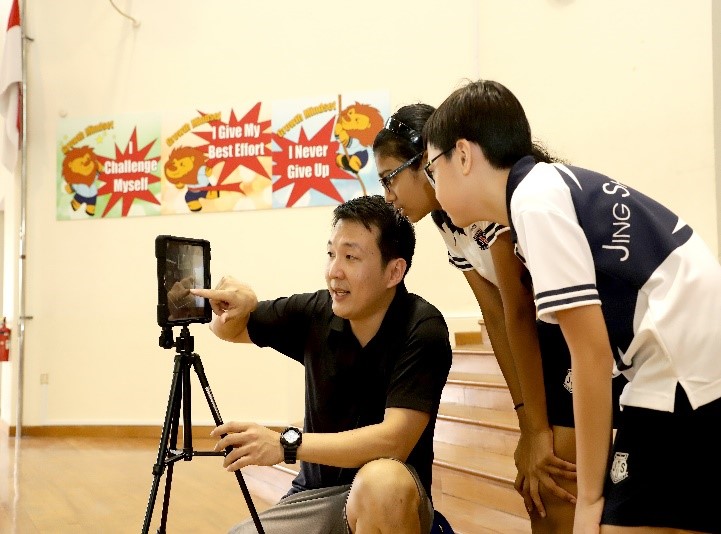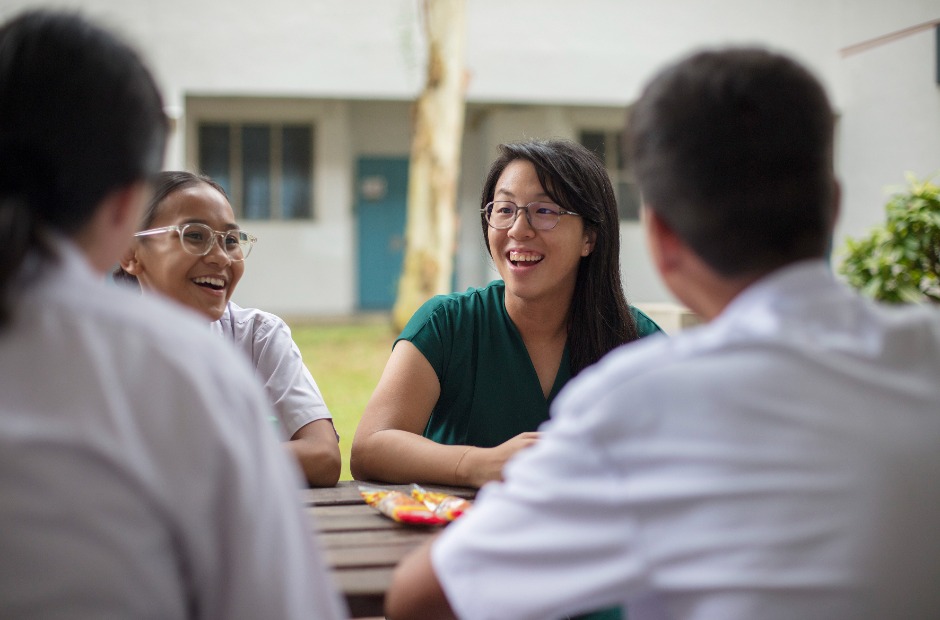Mr Lim Wei Sheng , Jing Shan Primary School, Outstanding Youth in Education Award 2019 Finalist
Small steps to success
“Just one more to go!”
The class cheered for John* as he ran his final lap. I could see his determination. He had never completed a full 1.6 km run before. For the past year, I would run beside him around the perimeter of the school’s parade square, training his stamina, teaching him to pace himself.
When he finally made it to the end, the class and I celebrated because it was truly an achievement for him.
If PE were just about fitness or skills, then many students like John would find it demotivating. However, to me, PE is more than that—it teaches values such as resilience, empathy, and discipline. These values take time to inculcate, and that is why I believe in celebrating each student’s tiny steps to success, instead of pushing them to make one big leap to victory.
This conviction is shaped by my own sporting experience. I played softball in secondary school. In one match, my team—all newbies—was defeated by a large margin.
The pitcher threw the ball so fast, none of us could hit the ball with the bat! After the game, our coach taught us the word ‘humility’.
Despite this early setback, we eventually became East Zone champions after four years. This four-year lesson on humility and perseverance shaped me as a PE teacher. It made me understand that teaching students bare statements like ‘Be kind to others’ or ‘Don’t give up when you fail’ is not enough, if we want to impart enduring life lessons.
Playing games and learning values
I figured out how stories can be used to teach values to children. I got my primary two students to juggle scarves—a difficult task, considering how unpredictable scarves can be as they flutter in the wind. When they struggled, I told them the story ‘Ronald Morgan Goes to Bat’, where the main character Ronald simply does not give up. They then wrote similar stories, inventing characters who overcame challenges to master their favourite sports. One student even read his out to round up our school’s annual Games Carnival. When children can relate to stories, the values from the stories stick with them for a long time.

Mr Lim’s students learn values through play during PE lessons.
Other than PE, students can also learn values through play. My colleagues and I came up with the theme ‘Capturing Moments, Cherishing Friendships’ for our school’s Children’s Day 2018 celebrations. We got our primary five students to host primary four students from Chaoyang School. Together, they were to complete a variety of carnival activities to win prizes, such as a physical version of the popular mobile game “Angry Birds”. As the Chaoyang students pulled the bands of the slingshot, our students helped by holding on to the slingshot itself to prevent it from moving. Playing games together allowed students to learn about inclusivity.
Finding what’s ‘just right’
Like John, every child deserves an opportunity to flourish through sports. Every student in my school is given a variety of sporting experiences in their daily PE lessons, whether or not they are already in a sports CCA.
To do this, I have to level the playing field. I consciously group students of different abilities together. I tell them that this is the ‘Goldilocks’ rule, named after the fairy tale in which Goldilocks looks for a bed that is not too big or small, but ‘just right’. In practice, this means students must constantly adjust their play based on their classmates’ ability. If your classmate is very skilful, then go all out and prevent him or her from scoring! If your classmate is struggling to dribble the ball, step back and allow him or her the space and time to attain some success. It takes a while for my students to learn the Goldilocks rule, but when I gradually see them cooperating to level up, I know the effort is worth it.

Sometimes, the difference in ability is because some of the students are from sports CCAs, while others are not. I overcame this by getting the latter to watch videos outside of PE class, to learn how to perform certain tasks. Through this, some of my students were able to deepen their mastery and achieve personal breakthroughs. These successes have sparked interest among my fellow teachers, and they are using this Flipped Learning method to their students’ benefit too.
Looking back on my journey, I realise that teaching isn’t just about studying pedagogies or using technology. It is also about getting students ready to learn and to experience success at their own pace. Like the late Fred Rogers—a giant in the field of children’s education—I aspire to provide my students with a meaningful expression of care every day. I do this through teaching them how to feel in control, to build friendships, and to celebrate successes.
*Name has been changed to protect the identity of the student.






.jpg)